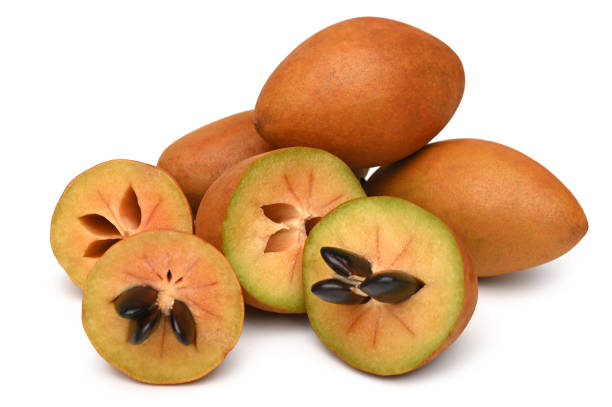In the lush tropics of South America, a sweet treasure awaits the sapodilla fruit. With its rough brown surface hiding a tasteful surprise within, sapodilla is a fruit that captivates both the taste kids and the imagination. Join us on a trip to discover the prodigies of this humble yet extraordinary fruit.
Preface:
1. A detail preface to Sapodilla:
Sapodilla, scientifically known as Manilkara zapota, is a tropical fruit native to Central America and the Caribbean but now grown in colorful tropical regions around the world. Its name derives from the Nahuatl word” tzapotl,” a testament to its ancient roots.
2. The Appearance:
At first regard, sapodilla might not feel like much. Its surface resembles that of a potato, with a rough, brown skin that belies the treasure hidden outside. still, beneath this unpretentious façade lies a sweet, sweet meat that delights the senses.
3. The Flavor Profile:
Cutting into a ripe sapodilla reveals a soft, delicate meat with a texture akin to a impeccably grew pear. Its flavor is a harmonious mix of caramel, brown sugar, and pear, with hints of cinnamon and nutmeg. Each bite offers a symphony of agreeableness that lingers on the palate, leaving a pining for further.
4. Nutritive Benefits:
Beyond its exquisite taste, sapodilla boasts an array of health benefits. Rich in vitamins A and C, as well as minerals like potassium and bobby, it supports vulnerable function, promotes healthy skin, and aids in digestion. also, its high fiber content helps regulate blood sugar situations and promotes malnutrition, making it a nutritional choice for those seeking a wholesome snack.
5. Culinary Uses:
Sapodilla’s versatility extends beyond its part as a simple fruit. Its sweet, caramel- suchlike flavor makes it a pleasurable addition to both sweet and savory dishes. From logjams and chutneys to ice creams and smoothies, sapodilla adds a unique depth of flavor to any culinary creation. It can also be enjoyed fresh, either on its own or paired with other tropical fruits for a stimulating fruit salad.
6. Artistic Significance:
In addition to its culinary appeal, sapodilla holds artistic significance in numerous tropical regions. In Mexico and corridor of Central America, it’s frequently used in traditional drug to treat affections ranging from coughs and snap to digestive issues. Its wood is also prized for its continuity and used in woodworking and construction.
7. Growing Sapodilla:
Sapodilla trees thrive in warm, tropical climates with well- drained soil and ample sun. They can reach heights of over to 100 bases and produce fruit time- round, with peak seasons varying depending on the region. While sapodilla trees are fairly low- conservation formerly established, they bear regular watering and occasional pruning to insure healthy growth and fruit product.
8. Sustainable Harvesting:
As with any natural resource, sustainable harvesting practices are pivotal to conserving sapodilla for unborn generations. By esteeming original ecosystems and supporting small- scale growers who exercise responsible husbandry, we can help insure the uninterrupted vacuity of this cherished fruit for times to come.
9. Conclusion:
In a world filled with an cornucopia of fruits, sapodilla stands out as a true gem of the tropics. From its humble origins to its exquisite flavor and myriad health benefits, it’s a testament to the prodigies of nature. Whether enjoyed fresh, incorporated into culinary creations, or cherished for its artistic significance, sapodilla is a treasure worth savoring. So coming time you encounter this unpretentious fruit, take a moment to appreciate the sweet wonder that’s sapodilla.

